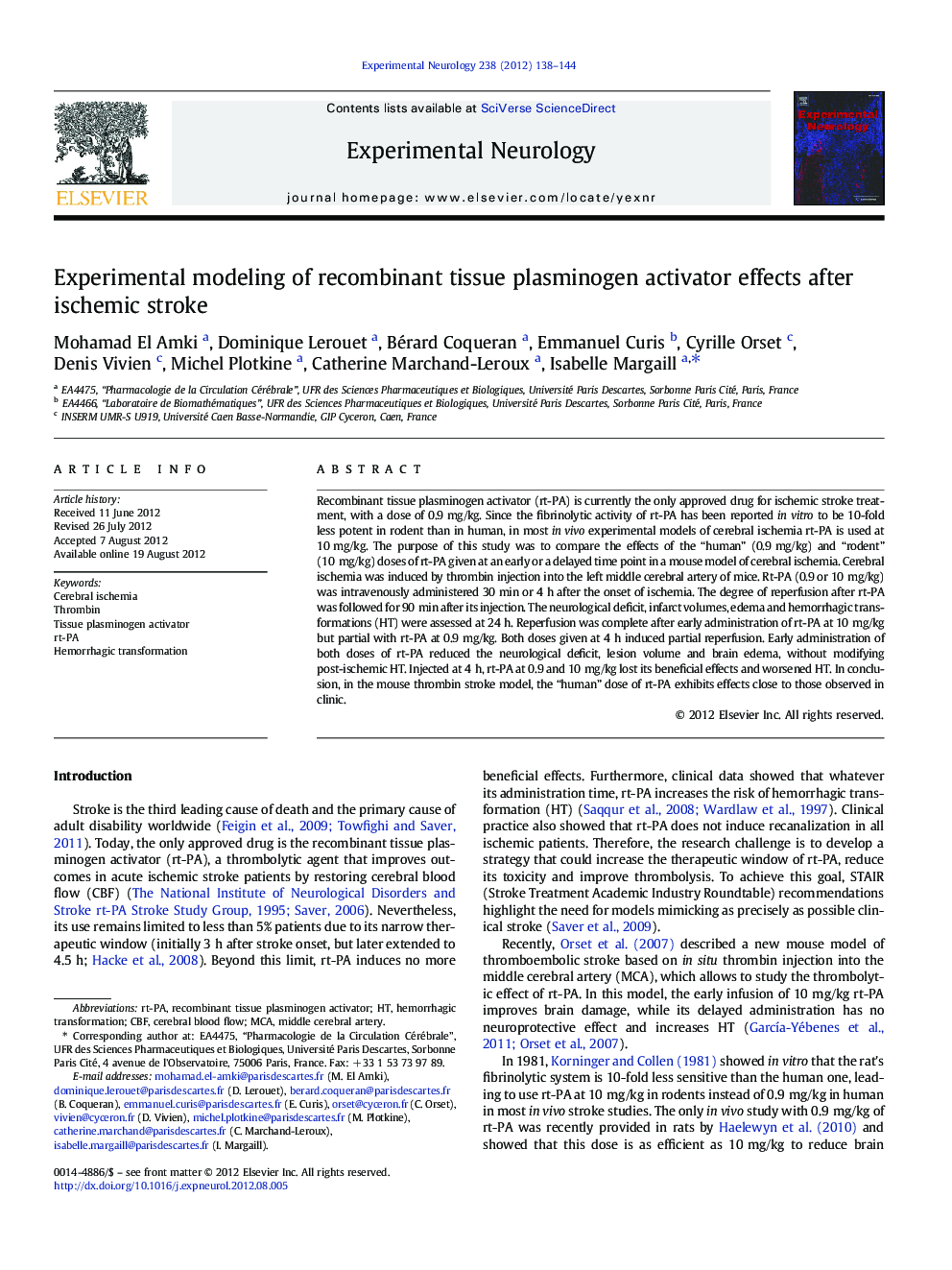| کد مقاله | کد نشریه | سال انتشار | مقاله انگلیسی | نسخه تمام متن |
|---|---|---|---|---|
| 6018747 | 1186527 | 2012 | 7 صفحه PDF | دانلود رایگان |

Recombinant tissue plasminogen activator (rt-PA) is currently the only approved drug for ischemic stroke treatment, with a dose of 0.9Â mg/kg. Since the fibrinolytic activity of rt-PA has been reported in vitro to be 10-fold less potent in rodent than in human, in most in vivo experimental models of cerebral ischemia rt-PA is used at 10Â mg/kg. The purpose of this study was to compare the effects of the “human” (0.9Â mg/kg) and “rodent” (10Â mg/kg) doses of rt-PA given at an early or a delayed time point in a mouse model of cerebral ischemia. Cerebral ischemia was induced by thrombin injection into the left middle cerebral artery of mice. Rt-PA (0.9 or 10Â mg/kg) was intravenously administered 30Â min or 4Â h after the onset of ischemia. The degree of reperfusion after rt-PA was followed for 90Â min after its injection. The neurological deficit, infarct volumes, edema and hemorrhagic transformations (HT) were assessed at 24Â h. Reperfusion was complete after early administration of rt-PA at 10Â mg/kg but partial with rt-PA at 0.9Â mg/kg. Both doses given at 4Â h induced partial reperfusion. Early administration of both doses of rt-PA reduced the neurological deficit, lesion volume and brain edema, without modifying post-ischemic HT. Injected at 4Â h, rt-PA at 0.9 and 10Â mg/kg lost its beneficial effects and worsened HT. In conclusion, in the mouse thrombin stroke model, the “human” dose of rt-PA exhibits effects close to those observed in clinic.
⺠Relevance of the “human” dose of rt-PA (0.9 mg/kg) in a mouse stroke model ⺠Early rt-PA administration is neuroprotective despite partial (but > 60%) reperfusion. ⺠Delayed rt-PA leads to low reperfusion and worsening of hemorrhagic transformation. ⺠In mouse stroke, the “human” dose of rt-PA closely mimics its effects in clinic.
Journal: Experimental Neurology - Volume 238, Issue 2, December 2012, Pages 138-144